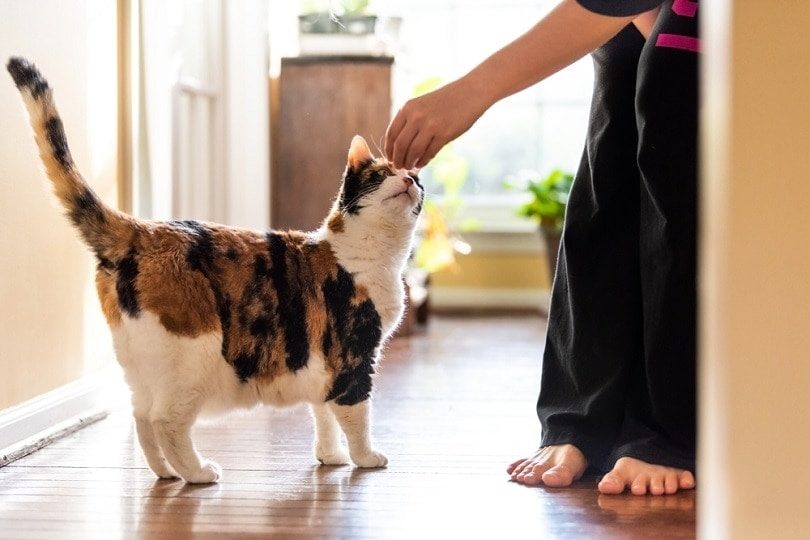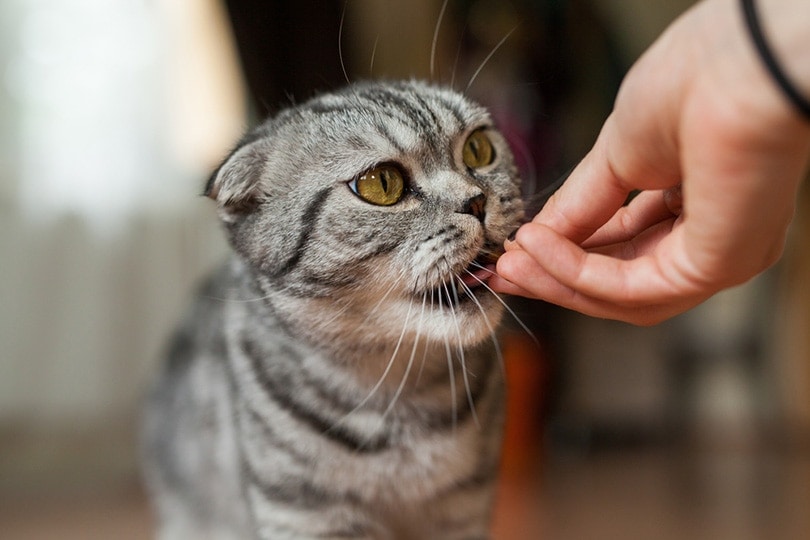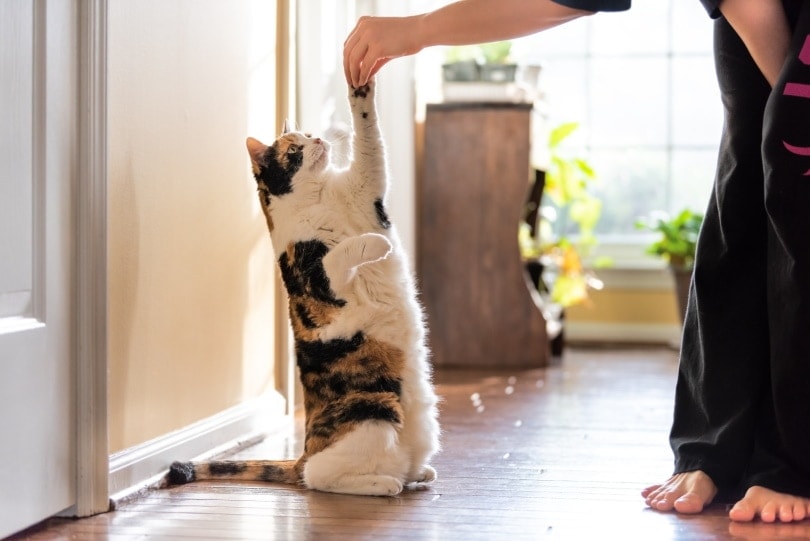How to Teach a Cat to Sit in 6 Simple Steps
By Jessica Kim
Updated on

Contrary to popular belief, cats are trainable and can learn some commands and tricks. All you have to do is set them up for success and train them in a way that’s enjoyable and easy for them to understand.
Teaching cats to sit can be beneficial for several situations. For example, it can be helpful for them to be still while you’re grooming them, and it can also prevent them from getting in your way as you prepare their meals. Training your cat is also a great way to spend time with your cat and strengthen your bond. So, it doesn’t hurt to try and train your cat to sit. With some patience and consistency, you can teach your cat to sit on command.
Before You Begin
You’ll want to set your cat up for success, especially if it’s the first time it’ll be having training sessions. The first thing you’ll want to do is find a time when your cat is focused. You won’t have as much success keeping its attention if it’s too tired or energetic. Also, since you’ll be using treats, avoid having training sessions too close to mealtimes.
Next, find a quiet place where you can train your cat. This location should feel like a safe space and have minimal distractions. Lastly, make sure you have a supply of your cat’s favorite treats. Remember to use your treats wisely, that shouldn’t account for more than 10% of your cat’s daily calories.
The 6 Simple Steps to Teach a Cat to Sit
1. Hold a Cat Treat in Your Hand

Kneel or sit close to your cat. Then, place a cat treat between your thumb and index finger. Try to get your cat’s attention and for it to notice the treat.
2. Hold the Treat Close to Your Cat’s Nose
Once you have your cat’s attention, slowly move the treat towards its nose. The treat should be just a couple of inches away from the nose.

3. Move the Treat Towards Your Cat’s Tail
Next, hover the treat above your cat’s nose and head, and start moving towards the tail very slowly. The goal is to have your cat’s eyes follow the treat and start to sit as you move closer to its tail.
If your cat moves around, close your fingers around the treat and move your hand away. Then, repeat steps 1-3 until your cat sits. This step tends to require the most patience, and it’s essential to stay calm and keep the training fun and engaging.
Some cats may take longer to understand that they need to sit. If your cat isn’t sitting after several attempts, try to break up the process. So, instead of waiting to give the treat once your cat sits, try to have your cat’s head follow the treat until you reach the middle of its spine. Then, give it a treat.
4. Give the Treat Once Your Cat Sits
As soon as your cat sits, give your cat a treat. Then, repeat steps 1-4 until your cat consistently sits whenever you hover a treat over its head. As your cat starts to understand what it’s supposed to do, you can start to minimize your movements.
So, instead of hovering the treat towards your cat’s tail. You can reduce the motion and only reach the middle of your cat’s back. Keep reducing your range of motion until your cat can sit as soon as you hold the treat above its nose.
This step can take days or weeks to accomplish. So, be prepared to have multiple training sessions throughout the day.

5. Add a Motion or Verbal Cue
Once your cat learns to sit while the treat is over its head, you can now add a motion or verbal cue. You can use any hand gesture or word for this.
After you decide on your signal, make sure you have your cat’s attention. Then, do the signal and then immediately hover the treat above your cat’s head. Give your cat the treat once it sits down.
Once you’ve done this several times, try using the signal by itself without the treat. If your cat sits down, give it a treat. If it doesn’t sit, go back to placing the treat above your cat’s head and using the signal until your cat learns to sit with just the signal.

6. Create Distance Between You and Your Cat
After your cat can successfully sit with just the signal, take a few steps away from your cat and use the signal. If your cat responds and sits down, give it a treat. Keep increasing the distance between you and your cat gradually.
Conclusion
You can expect the process of teaching your cat to sit to take several weeks to a couple of months to complete. Remember to keep the training sessions short and fun, and if your cat becomes disinterested, don’t try to force teaching it immediately. Wait for a few minutes and try again when your cat’s feeling engaged. Even if it takes longer than expected, your cat will eventually learn to sit.
See also:
- Can Cats Be Trained Like Dogs? Helpful Tips & Advices
- How to Teach Your Cat to High-Five in 8 Simple Steps
Featured Image Credit: Julieshoots, Pixabay













